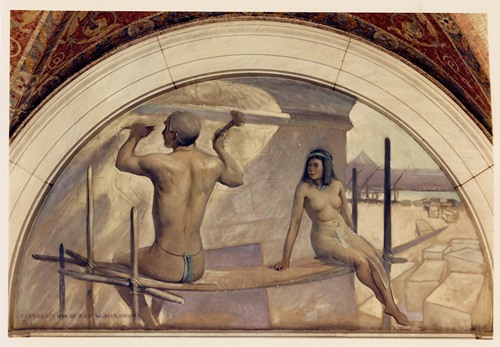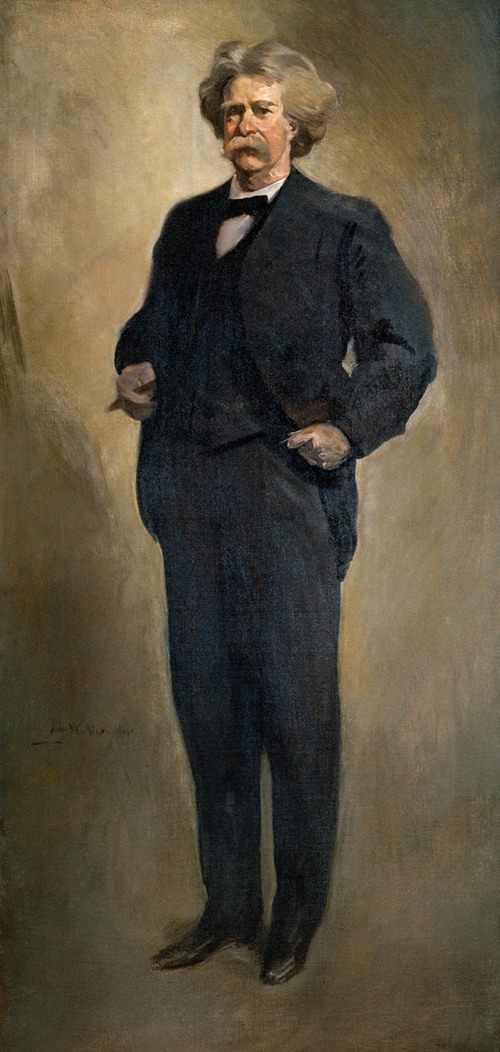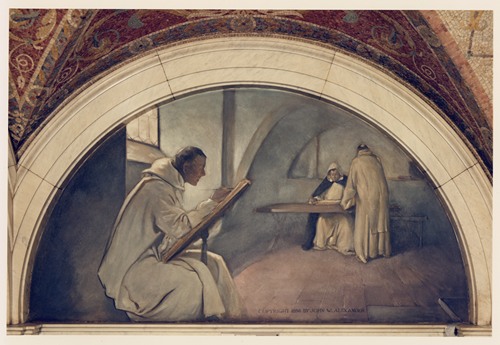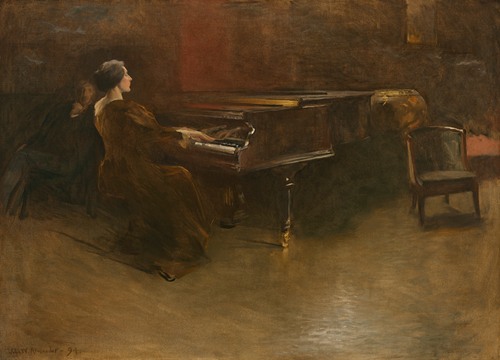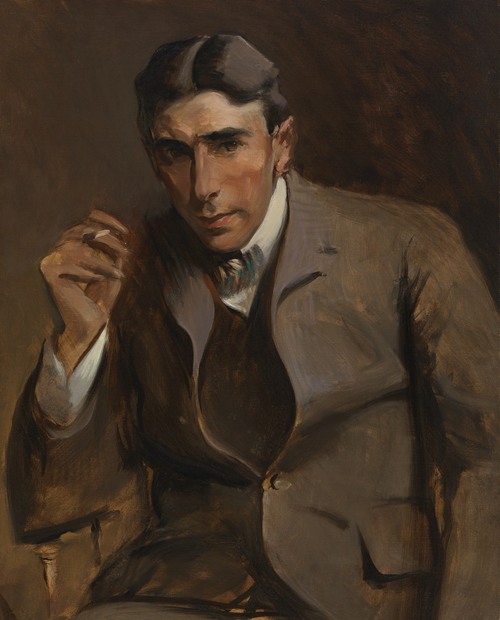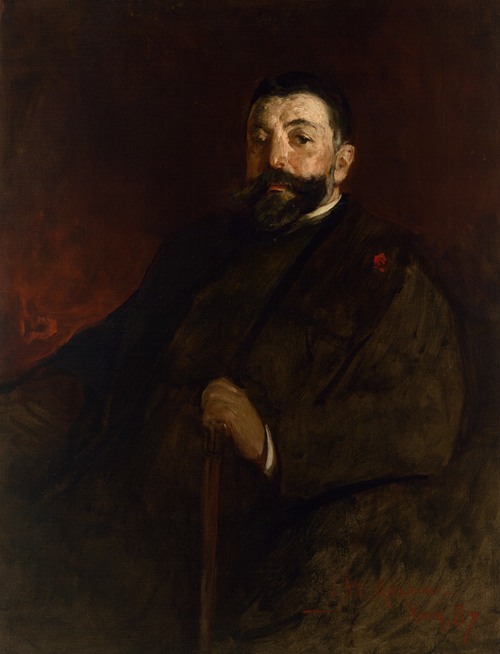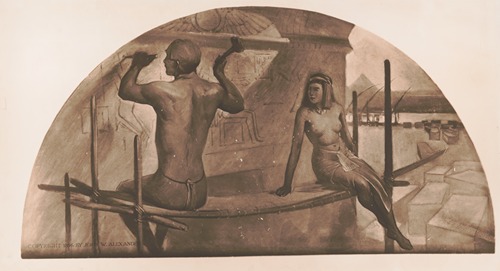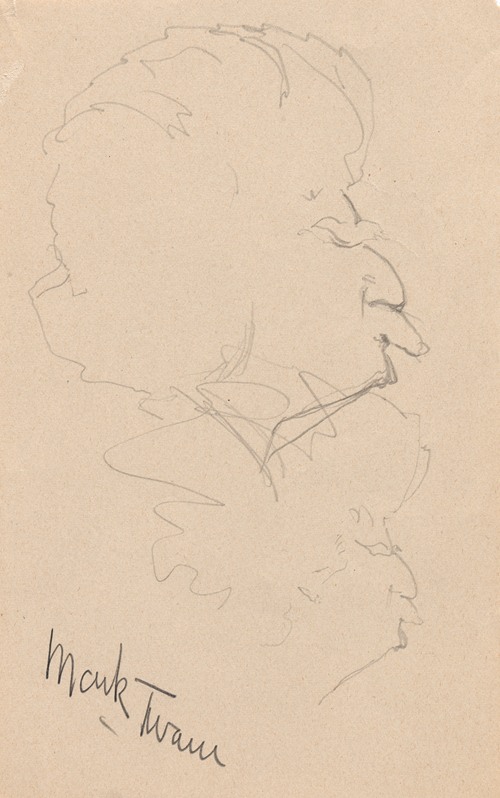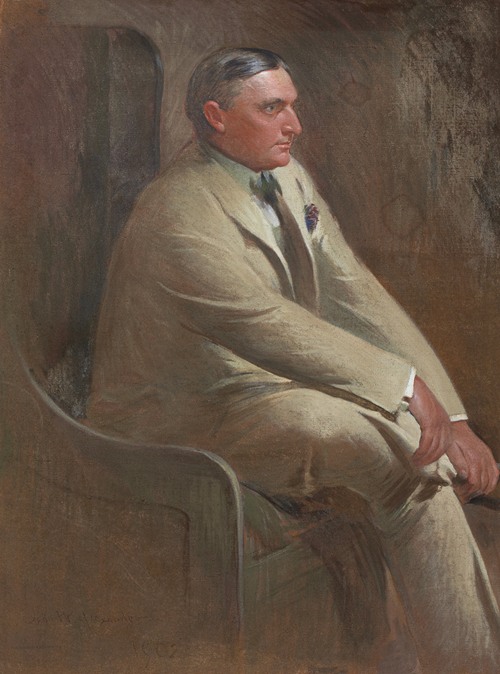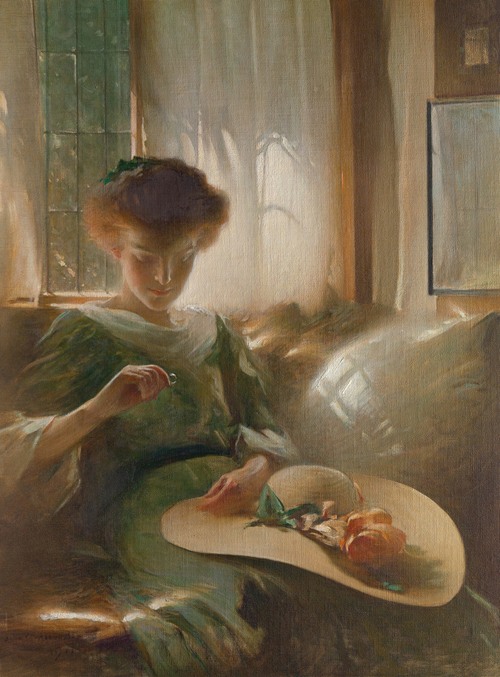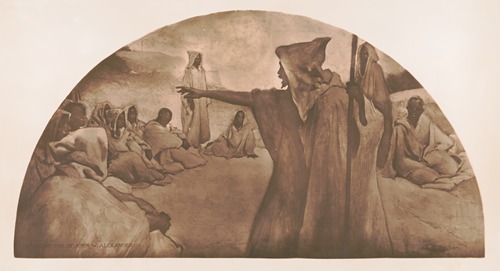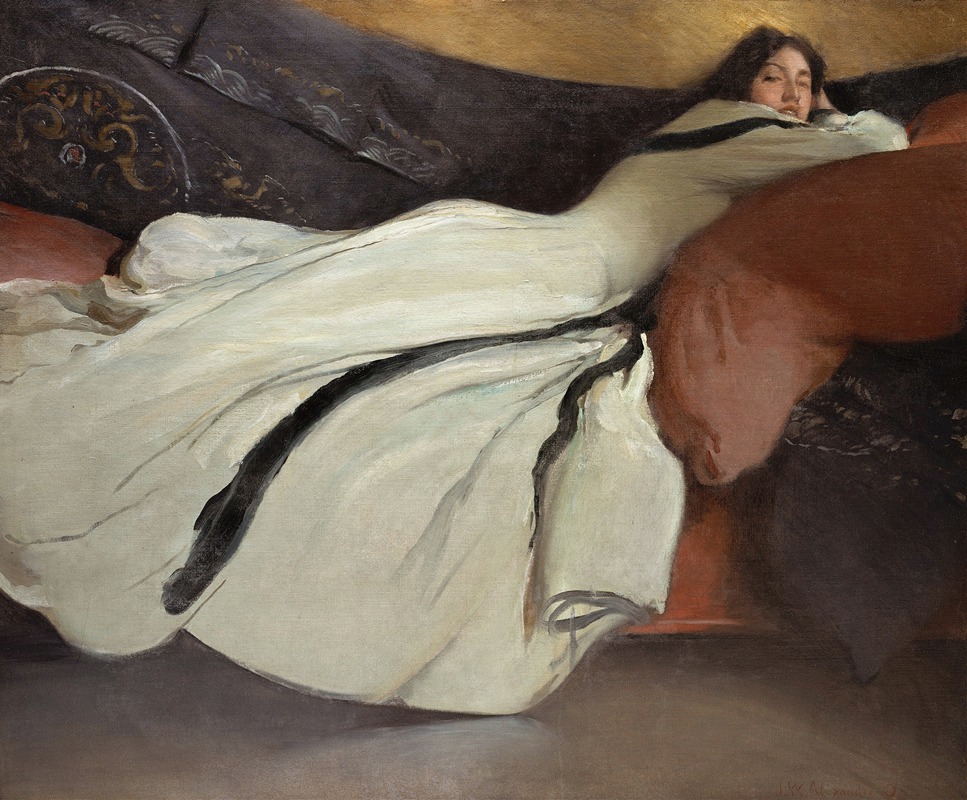

John White Alexander was an American portrait, figure, and decorative painter and illustrator.
Alexander was born in Allegheny, Pennsylvania, now a part of Pittsburgh, Pennsylvania. Orphaned in infancy, he was reared by his grandparents and, at the age of 12, became a telegraph boy in Pittsburgh. Edward J. Allen became an early supporter and patron of John W. Alexander, adopting the orphaned Alexander while he worked at the Pacific and Atlantic Telegraph Co. as a young man. Allen brought Alexander to the Allen home at "Edgehill" where Alexander painted various members of the Allen family, including Colonel Allen. His talent at drawing attracted the attention of one of his employers, who assisted him to develop them.
He moved to New York City at the age of 18 and worked in an office at Harper's Weekly, where he was an illustrator and political cartoonist at the same time that Abbey, Pennell, Pyle, and other celebrated illustrators labored there. After an apprenticeship of three years, he traveled to Munich for his first formal training. Owing to the lack of funds, he removed to the village of Polling, Bavaria, and worked with Frank Duveneck. They traveled to Venice, where he profited by the advice of Whistler, and then he continued his studies in Florence, Italy; the Netherlands; and Paris.
In 1881, he returned to New York City and speedily achieved great success in portraiture, numbering among his sitters Oliver Wendell Holmes, John Burroughs, Henry G. Marquand, R.A.L. Stevenson, and president McCosh of Princeton University.
Alexander was married to Elizabeth Alexander Alexander, to whom he was introduced in part because of their shared last name. Elizabeth was the daughter of James Waddell Alexander, President of the Equitable Life Assurance Society at the time of the Hyde Ball scandal. The Alexanders had one child, the mathematician James Waddell Alexander II.
Many of his paintings are in museums and public places in the United States and in Europe, including the Metropolitan Museum of Art, the Brooklyn Art Museum, the Los Angeles County Museum of Art, the Museum of Fine Arts, Boston, the Butler Institute, and the Library of Congress in Washington D.C. In addition, in the entrance hall to the Art Museum of the Carnegie Institute in Pittsburgh, Pennsylvania, a series of Alexander's murals titled "Apotheosis of Pittsburgh" (1905–1907) covers the walls of the three-story atrium area.
